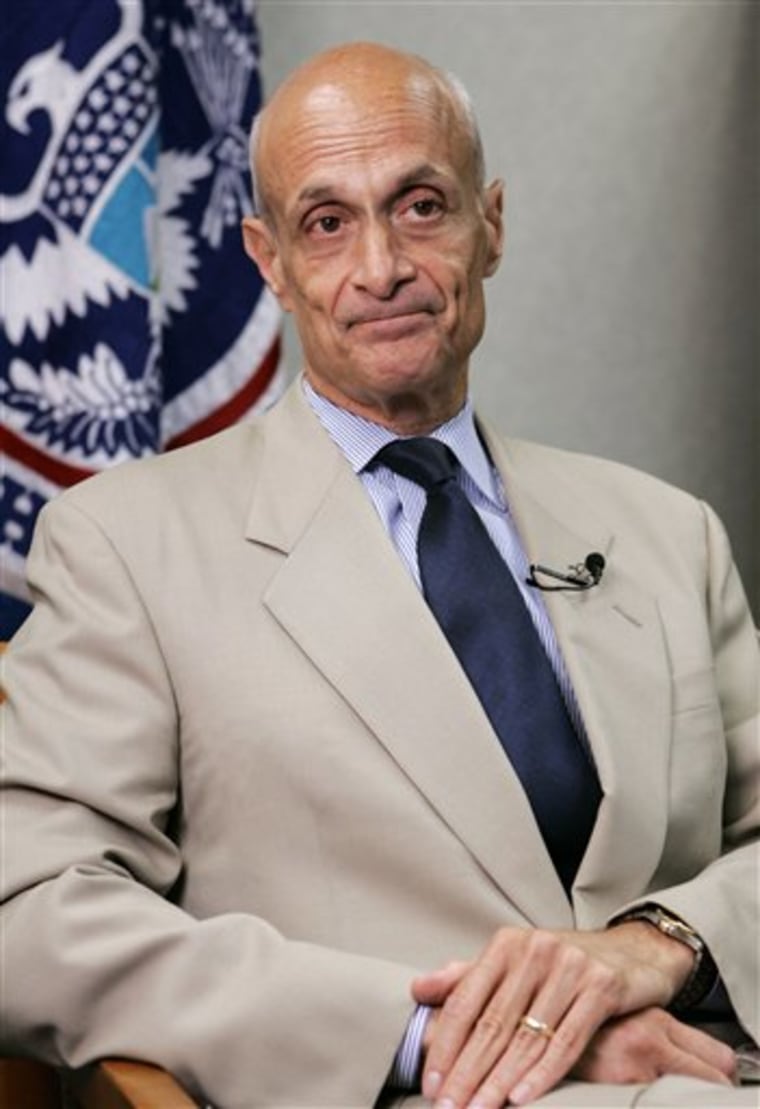Homeland Security Secretary Michael Chertoff said Friday he was pleased with the federal response to the massive Midwest flooding, though he acknowledged the disaster is nowhere near the scale of Katrina — the catastrophic 2005 hurricane that strained the public's trust in elected officials.
Many of the real tests will be in the recovery phase when disaster victims across the Midwest will be seeking federal reimbursements for damages and need places to live until they can move back to their homes.
Record-breaking storms and flooding across six states this week has forced thousands of people to evacuate and seek shelter. And even more flooding is expected in some of the afflicted areas over the weekend.
"It's not at the scale of Katrina which is essentially an ... equivalent of a nuclear blast or disaster," Chertoff said Friday in an interview with The Associated Press.
Still, it was the first real test of the federal disaster response system as this hurricane season gets underway.
And, so far, there have been no public complaints, reflecting lessons learned from Katrina.
From moving federal assistance into the regions quickly and not waiting for bureaucratic declarations, to setting up field offices with state and local officials, the federal government has made vast improvements over its 2005 bungled performance.
In the immediate aftermath of Katrina, Chertoff said he and top federal officials did not have enough accurate timely information about what was going on in the Gulf Coast region, particularly at a jam-packed Superdome and empty convention center in New Orleans.
That is very different now, said Chertoff, who just returned from a Thursday visit to the disaster area.
"It's gotten much, much better than that," he said.
Recovery matters
"The real tests are going to be with the recovery," said Mark Merritt, a former FEMA official and now president of a disaster consulting firm.
For instance, one of the government's most criticized moves was during the Katrina recovery, when thousands of victims were sent to live in emergency travel trailers that were later discovered to have high levels of formaldehyde — a preservative commonly used in building materials. Prolonged exposure can lead to breathing problems and is also believed to cause cancer. Complaints began popping up shortly after the 2005 hurricanes, with residents of Federal Emergency Management Agency-issued trailers reporting frequent headaches, nosebleeds and other ailments.
Currently, FEMA has a number of different temporary housing options for victims, that will be available once it's clear how widespread and devastating these disasters are. These options include rental properties and mobile homes that have been tested and determined to be safe to live in. But there will be no travel trailers.
"Trailers are not part of our current menu of options, precisely because we can't tell what is a safe level of formaldehyde in a trailer," Chertoff said.
Trailers will only be used for Midwest flooding victims if governors specifically request them and set a standard for a safe amount of formaldehyde. Displaced Midwesterners will be in shelters anywhere from days to weeks, Chertoff said.
Iowa was hardest hit by the flooding across the Midwest with about 9,000 residents fleeing their homes. Gov. Chet Culver declared 83 of the state's 99 counties to be state disaster areas, and nine rivers were at or above historic flood levels. Elsewhere in the upper Midwest, rivers and streams tipping their banks forced evacuations, closed roads, and even threatened drinking water.
No deaths or serious injuries were reported in Iowa, but one man was killed in southern Minnesota after his car plunged from a washed-out road into floodwaters. The flooding affected more than half a dozen states.
